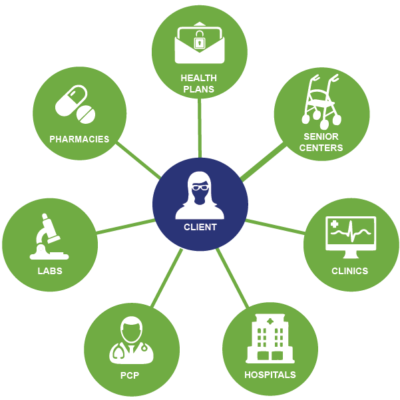Posted By Lorana Price On December 21, 2019
What is Interoperability?

According to the 21st Century Cures Act, interoperability refers to health information technology that does three things. Firstly, it enables electronic health information to be easily exchanged. Secondly, interoperability allows authorized professionals to access, exchange and use the health information. Lastly, it does not allow for information blocking.
Benefits of Interoperability
The ultimate goal of interoperability, however, is not so technical. The technology is merely the tool. The goal is to empower patients and reduce administrative burden. Patients will be empowered because they’ll have better access to healthcare pricing information and improved access to their electronic health records. On the provider side, interoperability will reduce duplication, provide continuity of care, and make it easier to spend time with patients. Furthermore, improved communication between providers caring for the same patient enables providers to make more informed healthcare decisions and coordinate the care they provide.
Beyond patients and providers, an interoperable health IT ecosystem will also support critical healthcare functions. These include:
- real-time case reporting
- disease surveillance
- disaster response
Additionally, interoperability supports data collection for research. This research can lead to improved clinical guidelines and practices.
How Interoperability is Achieved

$36 billion was budgeted for health information technology (HIT) infrastructure as a part of the federally‐funded Health Information Technology for Economic and Clinical Health (HITECH) Act of 2009. Of that, $34 billion was allocated for the Medicare and Medicaid EHR Incentive Programs. The goal of these programs is to provide more effective healthcare by encouraging the adoption, implementation, or upgrade of certified EHR technology. Certification is mandated by the Office of the National Coordinator for Health Information Technology (ONC).
With these systems in place, practitioners have the ability to review a patient’s complete health record. As a result, this knowledge enables providers to make more informed decisions related to patient care and to coordinate care for their clients. The electronic tools are designed to reduce the burden of these types of communication.
On the behavioral health front, agencies have been slow to adopt for a variety of reasons. However, some states, like North Carolina, require all organizations funded by Medicaid to participate in order to continue receiving payments for their services. So, there is a crunch on behavioral health agencies to rush to implement a Behavioral Health EHR that meets their unique needs in a timely manner.



